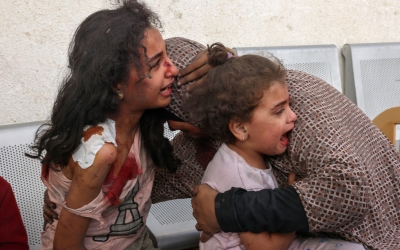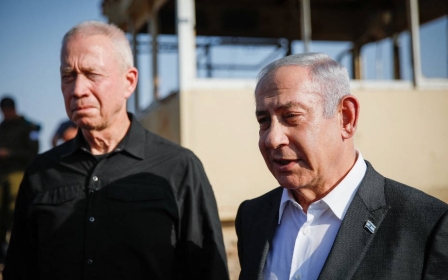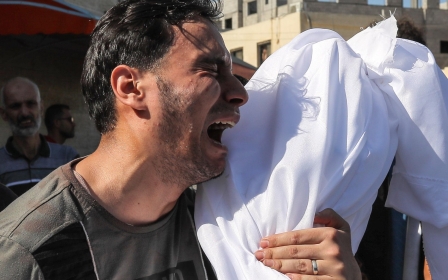Israel-Palestine war: What you need to know

Israel's siege and relentless bombing campaign in Gaza is pushing the blockaded Palestinian enclave towards a "human catastrophe" in the second week of the war between Israel and Hamas.
The conflict erupted on 7 October when Hamas launched a surprise assault on Israel and broke through its formidable barrier fence, shocking what is arguably the strongest and best equipped military force in the Middle East.
Using drones, fighters destroyed key surveillance and communications towers along the border with Gaza, and under the cover of rockets overran an area of more than 70 square kilometres.
The ensuing fighting sent shockwaves through Israel and raised the spectre of a larger regional war.
Hamas, a self-declared Islamic resistance movement, said it launched the attack in response to what it called ongoing Israeli crimes targeting Palestinians and the Al-Aqsa Mosque.
Since 1948, Israel has denied Palestinian refugees, who were forcibly expelled by Zionist militias ahead of Israel's formation, from returning to their homeland.
Today, the estimated number of Palestinian refugees exceeds 5.6 million.
In 1967, Israel occupied the remaining 20 percent of historic Palestine - the Gaza Strip, East Jerusalem and the West Bank. The occupation, the longest in modern history, has morphed into a system that UN experts and human rights groups describe as apartheid. Israel rejects the accusation of apartheid.
Israel - backed by all major western powers - has accused Hamas of deliberately attacking civilians in the assault, and Israeli Prime Minister Benjamin Netanyahu has vowed to "demolish" the movement.
Hamas has denied the claim and maintains that fighters did not deliberately target civilians.
Here, Middle East Eye breaks down developments of the war so far:
Gaza
Since Israel declared war on Gaza on 7 October, the Israeli air force has dropped the equivalent of a quarter of a nuclear bomb on the densely populated enclave, according to the Euro-Mediterranean Human Rights Monitor.
Most of the air strikes have hit civilian infrastructure - including hospitals, mosques, universities, media centres, government offices and banks.
At least 2,808 people have been killed, including 853 children and 936 women, as of 4pm GMT on Monday. At least 1,200, including 500 children, are missing and believed to be under rubble.
Over 10,000 more have been wounded, the vast majority of whom are civilians. More than 2,000 remain hospitalised.
More than one million people - almost half of Gaza's population - have been displaced.
Meanwhile, Israel has stopped the entry of food, water, electricity, fuel and aid into the territory.
Many humanitarian and aid organisations, including the UN, have denounced the siege as a form of collective punishment, and warned of an unprecedented humanitarian catastrophe if supplies are not allowed into Gaza immediately.
Israel
While still reeling from the 7 October attack, Israel has officially declared war and formed an emergency government, the war cabinet of which includes former generals and defence ministers.
More than 1,400 people in Israel have been killed since the Saturday attack, including 299 soldiers and 54 police officers. As of 16 October, there is no available data on the number of children and women killed.
Around 200 soldiers and civilians are believed to have been taken as prisoners of war by Palestinian groups in Gaza, according to initial Israeli estimates.
Around 4,000 people have been wounded, including more than 350 who remain hospitalised.
The army has since mobilised more than 300,000 reservists for the war which it says aims to obliterate Hamas.
Critics of Netanyahu's government say statements and actions made by senior Israeli officials suggest there is "genocidal intent" behind their plan, including the use of collective punishment, forced displacement and ethnic cleansing.
On Saturday, the Israeli military said it was preparing for a ground assault but did not give a timeline of when that may start.
Meanwhile, Palestinian groups continue to attack Israel with anti-tank missiles, drones, cross-boundary incursions and rockets, some of which have reached as far as Safed, some 180km north of Gaza.
Casualties and damage continue to be reported from these attacks.
East Jerusalem, West Bank and Palestinian citizens of Israel
Amid an atmosphere of anger in Israel and an appetite for revenge, Palestinians in the occupied West Bank and East Jerusalem have faced unchecked violence from settlers, soldiers and the police.
More than 59 Palestinians have been killed in the occupied territories in 10 days, a huge jump from the monthly average.
Many of those killed were shot dead by armed settlers, who attack Palestinian villages under the watch of Israeli soldiers.
Far-right groups are also sharing the names and locations of Palestinians on "hit lists" and calling for their death. The list includes political figures, journalists, public officials, student activists, and religious leaders, such as Sheikh Ekrima Sabri, the imam of Jerusalem's Al-Aqsa Mosque.
Palestinians in Jerusalem have been subject to aggressive police checks and and protests in solidarity with Gaza have faced deadly crackdowns.
Similiar incidents of incitement have been felt among Palestinian citizens of Israel, who comprise almost 20 percent of the country's population.
Lebanon
Shortly after the brazen 7 October attack, attention has been squarely on how events could unfold in southern Lebanon.
The US quickly moved two aircraft carrier strike groups to the Eastern Mediterranean. American officials said this was a measure of deterrence against other parties who may want to take advantage of Israel at this moment or attempt to "widen the war".
The message is believed to have been directed at the Lebanese movement Hezbollah, a long-time foe of Israel, and its main backer, Iran.
Hezbollah supported Hamas's attack but stopped short of saying whether it would join the fight or not.
Iran has also hailed Hamas and hinted that a regional escalation could ensue if Israel doesn't stop its attacks on Gaza.
While Hezbollah has so far remained vague about what it plans to do militarily, members of the group have exchanged fire with the Israeli army.
Palestinian factions in Lebanon, mainly Hamas and the Islamic Jihad, have also launched cross-boundary attacks on Israel and killed troops inside the country.
Israeli attacks on Lebanon - mostly artillery shelling and some air strikes - have killed 12 people so far, including four Hezbollah members, three Hamas members, two Islamic Jihad members, a journalist and two civilians.
Attacks by Hezbollah and Palestinian factions have killed at least five Israeli soldiers.
While the tit-for-tat attacks have so far remained limited, they have grown in intensity each day, with Israeli officials repeatedly warning they are ready to open a new front in the north.
Middle East Eye propose une couverture et une analyse indépendantes et incomparables du Moyen-Orient, de l’Afrique du Nord et d’autres régions du monde. Pour en savoir plus sur la reprise de ce contenu et les frais qui s’appliquent, veuillez remplir ce formulaire [en anglais]. Pour en savoir plus sur MEE, cliquez ici [en anglais].






